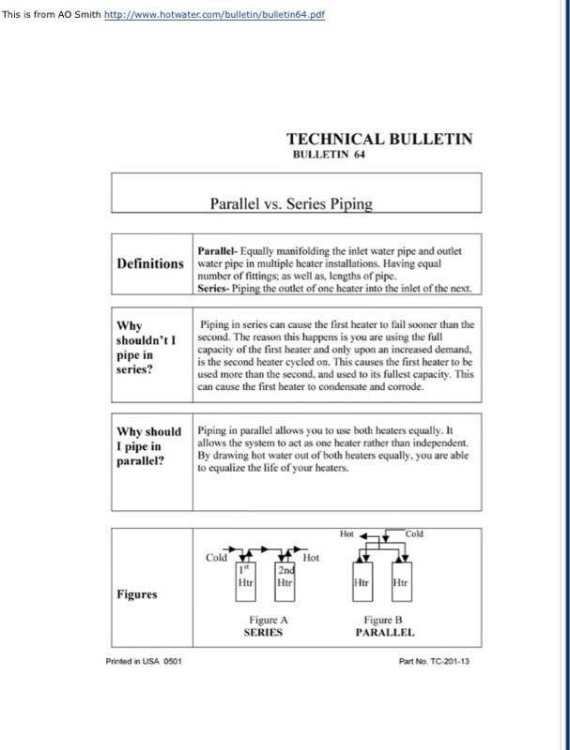Leaderboard
Popular Content
Showing content with the highest reputation on 01/19/25 in all areas
-
Janet simply hated them for their flaws, but I was torn: I really liked the concept but there are so many design issues left unaddressed or unoptimised that I am glad that we decided to replace ours. Take the issue of the strict cuboid form factor. Superficially this has lots of installation advantages because you can install the unit in a tight space without much space overhead -- except this is a dangerous assumption unless all of the risks are addressed. For this concept to work you would really need a unit designed for all maintenance access on one side, and this is not the case. All components that don't have a life that is significantly greater than that of the overall unit could fail in life and therefore need to be field-replaceable, e.g. heat sensors, heating elements, etc. The fluid design issues can't be ignored but IMO they largely are. The Sodium acetate trihydrate (SAT) PCM is heavy (S.G ~ 1.45) and cycles through a phase change roughly daily. The PC expansion coefficient is small but not zero, so the unit must be designed to facilitate this flex, and ditto all connectors and fitted components. A strict cube is a bad choice there. The cylinder is preferred for a reason. The fascinating Youtube History of the Jerrican discusses the evolution / design of a similar cuboid container that has been largely unchanged in 70 years. The SAs use plastic cells in a bolted steel box for support, but if you remove a side panel for maintenance access (except when the unit is completely cold) then game over. Ditto heat transfer. The unit needs to support ~30kW thermal transfer from the PCM to the potable water and this requires internal cell design especially as this has to happen throughout the phase change cycle. The SAs do better here, but IMO the UniQ implementation is still far from optimum. I could go on with more detail, but this post has already lost most readers so time to pause.4 points
-
You'll need to do all the local pipework with compression fittings, which are all very comfortably / easily accessible, and only then would this be practically 'moveable' in the event of it's early failure or......well I can't say service or maintenance as these things USP is supposed to be that they don't need any I would suggest you get some 20mm steel conduit, galvanised, cut it into 450mm long pieces, and just go full out Egyptian with it. Would need these all tight together with no gaps to spread the weight, and not distort the case, but I'd check with SA to see if that would yet again be "a non-standard installation" that would void your warranty You are deluded if you think the SA can be anything other than floor mounted? Even more so in a confined space. It's a genie lift job for something like this, and if it ever fell on top of someone then the are brown bread mate. These things feel as if they are full of dark matter... @Jeremy Harris what say you on these being installed, elevated, in a confined space, in an apartment?2 points
-
Thanks for the replies! Unfortunately don’t have funds readily available, so thanks for the advice around this. We have close personal ties to a construction firm, so don’t see the building side being too much of an issue, just finding the right plot at the right price point! We are looking across the whole of County Durham, and would potentially contemplate further north/south if the right plot became available. Thanks again!2 points
-
The other slimline twin tank unit I've found is this one: https://www.modernheat.co.uk/product/tesy-bellislimo-80-intelligent-electric-hot-water/2 points
-
https://www.cylinders2go.co.uk/shop/stainless-steel-unvented-cylinders/unvented-horizontal-cylinders/telford-tempest-125-litre-horizontal-direct-unvented-cylinder-2/2 points
-
Just get a recirculating hood. The mvhr extract point in your kitchen will do the best. It works really well and I do not miss a big extracting hood at all. If air quality is a big concern, get an induction hob rather than gas (get one anyway as they are better!)2 points
-
We have two Willis heaters plumbed parallel for our UFH. Generally only 1 is required to maintain the desired temperature in the 'off peak' window when the UFH is on. The idea was that if one failed we could turn the other one on for a seamless transition and keep the heat flowing. There was no way to isolate the Willis heater that was 'off' so I essentially had a mixer where half of the UFH return water would go through the 'on' Willis heater and be heated, the other half would go through the 'off' Willis heater and not be heated. When the two flows rejoined for another trip around the UFH coils the overall temperature would be reduced after this mixing. To counter this I fitted a couple of isolation valves so I could isolate the 'off' Willis heater and send all the return water through the 'on' Willis heater. The obvious problem with that solution is the risk of turning 'on' an isolated Willis heater (hopefully the built in over temperature protection would save the day!) My plan now is to plumb the Willis heaters in series. This would: Remove the mixing effect. Remove the need to isolate the 'off' Willis heater. Still allow system redundancy. Still allow 2 Willis heaters to be run at once if it got particularly cold and the sun buggered off for a protracted period. What are the flaws in that plan? @Onoff could you elaborate?1 point
-
Hi all, this is a long one, but I’ve been storing this all up since June 😊 My profile name is 'Highland Hopeful' as I joined here when I was still gathering info for my planning application of a new house in the Highlands. I'm super pleased that we got planning approval and now crawling our way through the Building Warrant application. It is equal parts breakthrough and breakdown, as we are doing everything ourselves. We are 37 and 44 and very enthusiastic, both have engineering (sound, electrics, civil, transport) backgrounds and are hands on people. I have found these forum threads so incredibly helpful, so thank you for existing, and haven't needed to post anything until today, but I would love to sense check a couple of things that have led to my ASHP sizing calculations as I’ve hit a wall. I have been using info from the forum, as well as a very useful textbook from the library called 'Building Services Engineering' by David V. Chadderton. The house is 19.2m x 4.8m, it has a 45degree pitched roof, it is one storey, so the ‘roof void’ is just open so that one can look up and behold it. It has one bedroom, and only my boyfriend and I will live in it, full time. The radiators and DHW will be heated by an air-to-water air source heat pump. We are not having underfloor heating. It will have triple glazed windows (I have already bought them – it was cheaper to design the house around what was available on seconds, than to spec them around a design). The questions I would love your thoughts on 😊 1. How to include DHW in ASHP Sizing Calcs I have calculated the U-values of walls, roof, floors, windows and doors and used this to calculate the heat requirement. I’ve assumed 0.6 air changes per hour. Outside temperature of minus5C. As a result, I got a heat requirement of 4kW. So I though woo great, I’ll get a 5kW heat pump. But then I read in the textbook that this heat requirement is only part of the ‘boiler’ power calcs (I’m calling it a boiler as that is what the textbook from the library is based on) as I need to include for losses (10%, so 0.4kW, fine) and the power required to heat the water in the cylinder. This is where I got confused. To calculate the ‘boiler’ power you need to know the time to heat up the water in the cylinder, and for that you need to know the power of the ‘boiler’ (circular reference warning?!), so I used 5kW as that’s what I wanted to buy, but then obviously that tells you how long it takes to heat the cylinder if the power of the system is 5kW, which then would need adding to my heat requirement of 4kW and losses of 0.4kW to give a ASHP size of 9.4kW... I didn’t like how the equation was self referencing, i.e. if I’d said I was having a 12kW system, that’s what would go into he heating time calc, which would then go back into the ASHP size, and could just go up forever... Is it that I need to specify what kind of reheat time I’m happy with? Does 5kW based on the info above seem reasonable (U value of walls 0.131, roof 0.105, floor 0.21)? How do I incorporate the need for the DHW. Ha even this question is going around in circles! A problem may be that I’m using ‘Boiler power’ calcs from the building services engineering textbook to try to work out ASHP size… 2. U-value of Pitched Roof I think there's a high chance I have done the U-value for the roof wrong. We are having a 45degree pitch, which is completely open i.e. doesn’t have a flat ceiling with a roof void above it. I have worked out the U-value of the roof as if it is just two flat pieces. In the textbook I am using it says for pitched roofs I should use the formula: U = 1/(RA cosβ + RR + RB) where RR is the resistance of the roof void (we don’t have one) and RB is the combined resistance of the materials in the flat part of the ceiling including the inside (we don’t have a flat bit of the ceiling). I have tried to find online a way of calculating U value for pitched roofs, but not coming up with anything useful. Any ideas? 3. Average Coldest Temperature I’ve assumed an average coldest temperature for the heat requirement calcs of minus5C, but I’m really not sure about that. We are right on the north coast looking at the sea, but still seemed very low – any thoughts? I couldn’t find a good source for that, so just used what I found. So sorry this is long and thanks for your time if you got this far! I’ve been working through this for months and have everything in a spreadsheet that will update if I change any of these numbers. I feel like I’m nearing the end so would love advice on these finer points.1 point
-
I lifted our original unit upstairs, on my own, with a sack trolley, loads of spare climbing ropes, two Petzl stops as safety brakes, a steel cable and a tirfor winch. Took me about half a day to get it up a single, straight, flight of stairs. I used the tirfor with a 2:1 tackle to move it up one step, then locked it off with the ropes and Petzl stops, re-jigged the steel wire and tirfor so I had enough movement to get it up another step. The sack truck was rated to carry 150kg, but really struggled and has never been the same since. They only way to move these things safely is with something like the guys used on Thursday, a Zonzini powered lift and stair climber. That had the advantage of being like a mini-fork lift, in that the forks can be motored up from floor level to around the level of the back of a van, and then a couple of people can just about slide the unit across and strap it to the Zonzini. They are, without a shadow of doubt, a manual handling nightmare if you're on your own.1 point
-
Thanks! I've added it to my collection. At 704mm high the 40L version - confusingly named the 50 - is interesting, but the manual requires a minimum of 500mm space below (and 50mm elsewhere), which is disappointing. The Ariston may require less (they don't mention it in their information), presumably determined by the length of the sacrificial anodes rather than the tundish as the discharge pipe connects to the top. Although I'd hope that my planned phosphate dosing water treatment device would avoid them having to be replaced in practice.1 point
-
You are deluded if you think the SA can be anything other than floor mounted? Even more so in a confined space. It's a genie lift job for something like this, and if it ever fell on top of someone then the are brown bread mate. These things feel as if they are full of dark matter... @Jeremy Harris what say you on these being installed, elevated, in a confined space, in an apartment? Sorry - I was referring to the Telford Tempest suggested by Nickfromwales; I should have obviously quoted that in my reply to avoid confusion. No, I wouldn't want to suspend a SunAmp!1 point
-
There’s two types, glue down and click, the click version can have an underlay or has a built in underlay and can be used on slightly uneven floors. The glue down does not have underlay and needs a perfect base to lay on.1 point
-
The overall flow temperature you are seeing is the result of the return temperature, the flow rate, and the power you are putting into it with the heater. I would wager if you valved off the "off" heater, you would see exactly the same figures as you are still putting in the same amount of heat.1 point
-
Hi everyone, Mainly joined for tips on finding a self-build plot, as been looking for a while and struggling to find something suitable. Look forward to chatting with you all!1 point
-
Wow, there's a lot of words up there. ⬆️ And some shouting. Just for the record I have no criticism of the physical installation in any way, it's a work of art. ~~~ I'm not sure how many people on here use Willis heaters for their UFH? I don't think there are that many of us? We only need one 3kW Willis heater to heat the house. We have two 3kW heaters plumbed in parallel. As someone who has lived with Willis heater UFH for a few years our experience is that having the water flow through 2 Willis heaters (one 'on' one 'off') mixes down the temperature of the water exiting the 'on' Willis heater. It would, wouldn't it. The water flows through the Willis heater at a certain rate (not exactly sure how many litres/min) but definitely not slow enough to get to any significant temperature before it's on its way around the system again. The highest exit temperature I've seen with a thermal camera is 34.2°C and that's after the UFH has been running for the best part of 6 hours (I set the thermal cut out to 40°C). At the beginning of those 6 hours it would have been around 22-23°C. The house copes very well with the one Willis heater providing the heat and, despite this January being unusually cold for us soft southern bastards, we've had a useful amount of sun to offset that and just running the one Willis heater has been fine. Anyway, as the prophet said "He's grown man so let him just carry on about his business please" and, as a grown man - I think I will 😃1 point
-
1 point
-
1 point
-
1 point
-
As you may have gathered from this thread, SunAmp units are far from maintenance free, and so IMO they need decent maintenance access all round, compression turn valves on all in/outs and the ability to slide the unit out in extremis. We made the mistake of not doing this. They are also extremely heavy. So my suggestion is that if you do want to "hide" the unit in a "wardrobe" then install it on a platform and make your "wardrobe" open backed and fixed to the wall with bolt fittings so you can unbolt and temporarily remove the wardrobe entirely for easy maintenance access when needed.1 point
-
1 point
-
I do intend to run the heating 24x7 with weather compensation. Indeed that is how it is now running, while the 250mm slab gets warmed up. The room thermostat will be there to control when the heating pump comes on and the actuators open on the loops. Currently all actuators are manually opened, but will be switched back to Auto at a later date. We elected to go for a buffer tank setup so that if we wanted to zone this downstairs (bedrooms etc) into separate zones by adding extra thermostats we could do so without major plumbing rework.1 point
-
A reasonable point. But the skillset to install. A2A (basically fgas certification) would also be encouraged by subsidising a2a. The skillset to install any HP (vs gas boilers) is basically in the specification. There isn't anything in installing a HP that a gas safe engineer can't already do. The only tricky bits are getting the system design and sizing right in the first place. With a2a the issue is fgas - and there are good reasons for not letting any old sod loose given the higher gwp of the gasses. R290 gets around that issue but does introduce the flammability issue - but that isn't significantly different from gas safe issues.1 point
-
Wind all thermostats out the way set to say 24. Set system up, you really should set the weather compensation curve now. And balance system. Once all set it should just run on its own.1 point
-
Multiple En suites are up there with wooden kitchen surfaces, outdoor kitchens,dining rooms and resin driveways etc..... Great in theory but in the real world have real world draw backs. With en suites it's the amount of additional clesning... 5 toilets a week, 5 basins, 4 showers, 4 tiled floors etc... It really adds up!! Jack and Jill, or just additional "general" access bathrooms vets my vote.1 point
-
With the 2 in parallel, say 3kw each, assuming a total flowrate of 12.5LPM, 6.25LPM through each, gives a dT of 6.88C, a return temp of 42C gives a flow temp of 48.88C. 2 in series, flow through both is 12.5LPM, dT through each is 3.44C, it enters first heater at 42C, leaves at 45.44C, enters the second at 45.44C, leaves at 48.88C. Switch one off (still in series) dT through first (12.5LPM) is 3.44C and 0C through the second, flow temperature 45.44C. 2 in parallel, one switched off, dT through switched on one, (at 6.25LPM), 6.88C, flow temp 48.88C, dT through second (switched OFF) 0C, flow temp 42C, 6.25LPM at 48.8C mixed with 6.25LPM at 42C gives 12.5LPM at 45.44C.1 point
-
https://forum.buildhub.org.uk/topic/42270-unbelievable-brickwork-will-this-pass-building-control/#comment-596598 Maybe I was using invisible ink.1 point
-
The downside is noise transmission through the doors so, if you go this way, install acoustic-rated doors & frames. Personally, I'd avoid them.1 point
-
FWIW I use microzoning to mean control per room or per emitter (eg radiator).1 point
-
I am tiling my roof, it is a cross gable roof ,, T shaped. Are there Ridge tiles specially made for the intersection where both roofs meet?1 point
-
just set the stats differently so one will switch off when the flow temp starts to come up?1 point
-
If there are concerns about longevity of this wall, your neighbour ought to be even more concerned than you are. I'd start by talking to them and offer access to your side for the builder to improve it.1 point
-
I will ask, I need to call him as soon as I'm ready to get the standby water heater sorted.1 point
-
1 point
-
Was 2 years ago. Supply and erect. I did the foundation which is also insulated.1 point
-
Welcome. This is a great forum, and there are some very knowledgeable folk on here. Our search for a plot started 20 years ago, and during that time, I did the following. 1) Wrote more letters than I can count to landowners who had prospective plots (spotted during my cycling rides around Dorset). I think I received one email to say no. The rest just completely ignored me. 2) Paid £50 and signed up to the Dorset Self Build Register (£50 down the drain) 3) Used PlotBrowser - the FREE listing of house-building plots and self-build land to look at potential plots, but never had the cash in the bank to enable me to move quickly. Plots are so few and far between, and to give yourself a fighting chance, you need to have the money in the bank, and ready to go. Seeing a plot, and then trying to get financing arranged takes weeks if not months. Most people will not wait, and there will always be someone who has the cash in the bank. In the end we got so fed up, that we sold our house and moved into rented (also tried that tactic in 2014), and we found our plot on Rightmove, but we stopped looking just in Dorset, and expanded our search area to Hampshire and Wiltshire. It is a frustrating task, especially, if you don't have huge amounts of cash sitting in the bank, but that being said, you might be fortunate to have a £1,000,000 for a plot. In which case, your task will be much easier. Good luck.1 point
-
Yes. Rainwater from the roofs into a rain garden, then into a holding pond, which we use to water our veg garden. Cost? 500 600 quid. Commercial grey water recycling we thought financially unviable. Unless we needed to feel scorched by the heat of our own worthiness in the pub. Nice to have, but we decided to spend on the kitchen instead.1 point
-
1 point
-
I have but I need to update it, which I can do hopefully today or tomorrow. Will post it up.1 point
-
We did 5 bedrooms, with 4 bathrooms, 2 ensuite, 2 with baths. Works perfectly for our needs, and I'm glad we didn't do more unnecessary bathrooms. We're expecting to be here 20+ years, so it's got to make sense to do what is right for you.1 point
-
I'm sure I could have called them back, but the guy drove down here from Nuneaton and frankly there is no way I could live with asking someone to do a 5 or 6 hour round trip for a ten minute fix I could do myself. As you say, I'm sure it was just one of those things, there was not the slightest indication of poor workmanship that I could see. The really massive PITA with these things is that they just cannot be quickly sorted if they do weep. A few seconds nipping up a slight weep on a compression fitting is a quick and easy fix. Battling to cut off and replace one of these press fit fitting is both a pain and time consuming, as well as carrying the risk of damage to the pipe. If they were easier to get off and replace then maybe they might be OK, but as they stand I'm not going to give them houseroom in future.1 point
-
Why wasn't the fence taken down and permission given for access, eg so they had a fighting chance of doing at least a better job than that?1 point
-
1 point
-
Hi Henry. Welcome aboard. Plenty of experience here in renovation and garden buildings so ask away and chip-in where you can!1 point
-
Just do it. The local authority won't want the bad press for kicking up on a sustainability element over a technicality. If they do just refer them to their own sustainability statement (there'll be one) and that you'll go to the papers as well as appeal.1 point
-
1 point
-
1 point
-
>>> I'm going to prepare for the worst though and continue trying to get a response from the LPA I'm guessing that the LPA shelve your application as soon as they know it's gone off to appeal. For 'non-determination' I expect. Others should comment, but I think there's nothing to be lost by submitting the same (or a very similar) application to the LPA. That way, you have both in parallel rather than sequentially. Next time I do planning, I may do 3 or 4 parallel applications simultaneously.1 point
-
Just be a little cautious, I had an appeal against refusal of a CoL start in November 2022 and the decision issued in May 2024. They blamed this on needing particular Inspectors for CoL and enforcement appeals. The Inspector refused the appeal but for a different (and addressible) reason than the Council used. Hopefully they've caught up with their backlog.1 point
-
1 point
-
I know this is an old topic / post but thought that (as a brick maker) I would post what is good practise and often gets missed by DIYers and professional builders alike: Portable sample boards ARE NOT to be relied upon as being truly representative of the product that may be delivered. You should: Request a sample from the manufacturer of enough product to build a site panel 1M2 to be used as a reference panel. This should be built on site on a level, weather protected area and used to build subsequent sample panels from each delivery to make sure they are a reasonable match to the reference panel. The product supplied by the manufacturer should NOT be filtered (with the exception of broken pieces) and laid as received. If critical you should also request the manufacturer approve that what has been built is acceptable to them as to what will be received in the main deliveries. This is as per PAS (Publicly Acessible Standard) 70:2003 for good site practise. So the question usually is why do you have to do this - surely "They should all match the sample board"... Clays, sands, kilns, thermocouples, valves, fans, motors, sprayers, people and the wind direction changes. I kid you not - these are factors that can affect the appearance of the finished product and I have probably missed a few factors. So imagine you order a sample board (which are usually 3 courses of1 and a half bricks - so 4.5 bricks) 18 months before you build and rely upon that as your reference. 1) 4.5 bricks is not usually representative of a complex blend due to the size of the sample 2) The stock pile the brick works might change from when the sample was made and current production runs - clay stock piles can subtly differ in their chemical composition due to the nature of how clay deposits are laid down. 3) The works may have upgraded/changed its kilns from i.e. a Hoffman to a tunnel kiln 4) The sand stains originally used may have run out and a similar (but not quite the same) product has been sourced 5) If the works is a clamp works (that being where the bricks are piled in a huge mound with coal between each layer and fired in the open air) for example the wind might have been stronger this batch than the one you sampled from meaning they fired faster and hotter - which changes the firing curve affecting the product achieved. 6) The temperature measuring devices (thermocouples) can drift. This is usually compensated by yearly calibration BUT they do drift and a noticeable colour difference can occur with a firing temperature difference of 5 degrees C in 1100 i.e. a 0.45% change... 7) Coal addition is usually done by inline belt weighers - these can also be affected by mis calibration / poor maintenance affecting the weighed amount added. 8 ) The product may be in high demand so it may be that the management want a higher throughput to meet demand. This means that the works manager might increase the speed of the firing (usually by either increasing the ramp speed of trimming the top soak). This modification can affect the colour and appearance. I could go on but these are some of the factors that can affect why one batch may differ from the other. In short - the only true way to garauntee the product you show planners (for example) is a perfect match to what you end up building with is to go to the manufacturer, inspect the yard stock, get it ring-fenced and randomly sample from that exact batch. Clearly for small builders this is not really practical. This is what the big house builders used to do i.e. they would call Redland and say we are looking at buying 400k Dorking Multi / w/e. Redland would then make 400k bricks and invite the buyer to come over, sample for his reference panel and ring fence it if he was happy. HTH for those who are confused why sometimes bricks do not match the sample / image.1 point




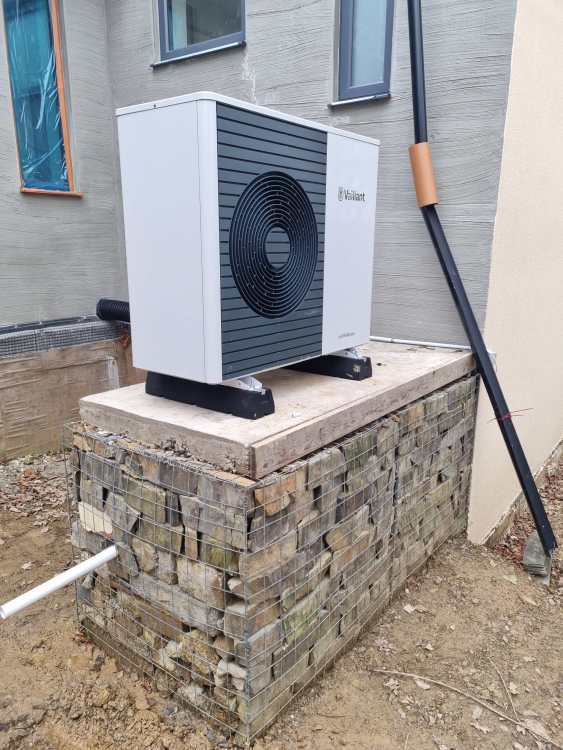

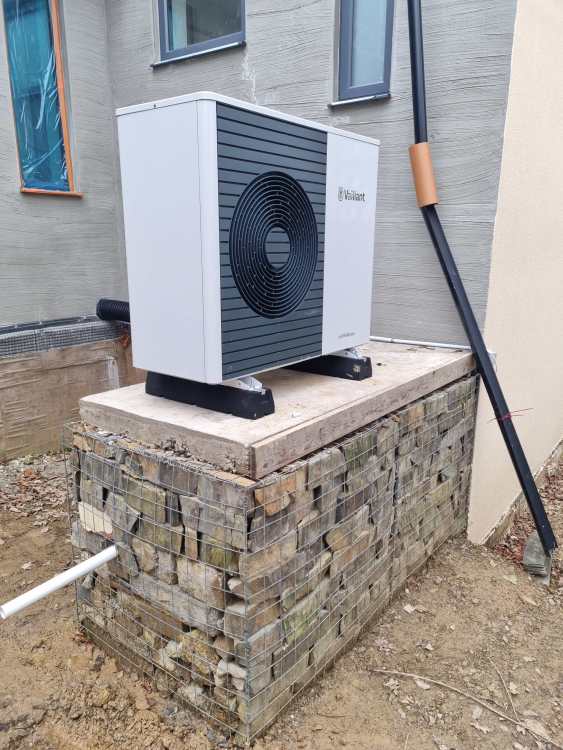
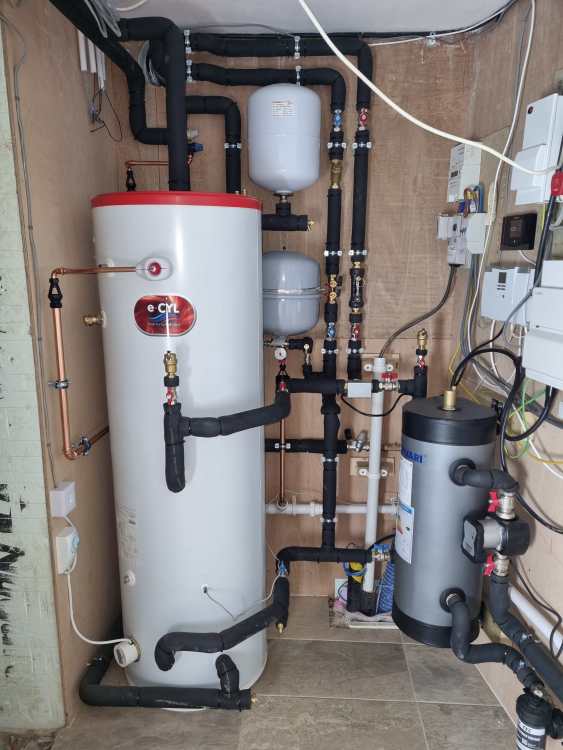
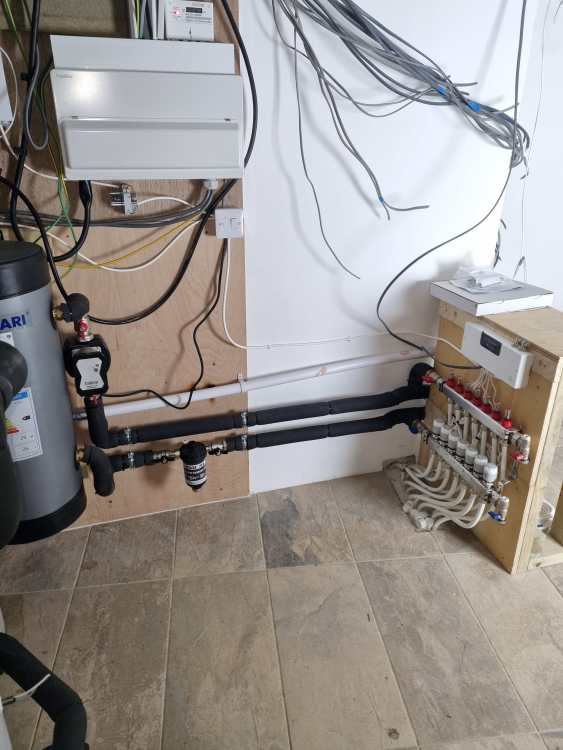
.jpg.c21f3ac78c9b7efd90cbdcb312744dc5.thumb.jpg.7adcad4c0e384f5ecd7d56b0618df6e5.jpg)
